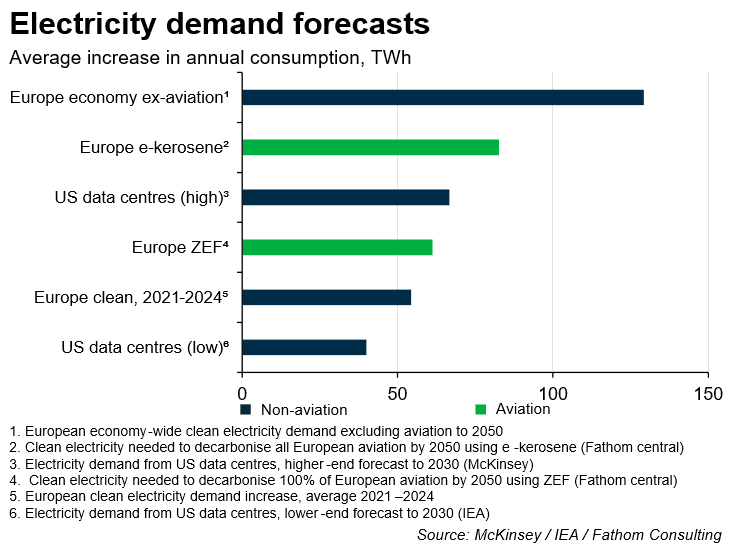Electricity will be the new jet fuel
- Decarbonising aviation will require much higher production of clean electricity and hydrogen, as each of the two truly scalable low-carbon ways to fly — e-kerosene and hydrogen-powered zero-emission flight (ZEF) — require a huge amount of both
- Europe’s strategy for net-zero flight has until now relied heavily on a switch to sustainable aviation fuels (SAFs) produced from waste; but it has become clear that shortages of feedstocks such as used cooking oil, agricultural waste and municipal waste mean that less than a fifth of aviation can realistically be decarbonised in this way by 2050 and beyond, leaving e-kerosene and hydrogen the only viable long-term options
- Europe currently produces 2,140 Terawatt hours (TWh) of clean electricity per year, including wind, solar, nuclear and other renewables; by 2050, excluding aviation, we project that it will need to produce nearly 5,500 TWh of clean electricity, and possibly more, depending on its success at building up its AI capabilities — decarbonising aviation would in addition require between 1,593 TWh (if done fully with ZEF) and 2,148 TWh (if done fully with e-kerosene) per year
- Thus to decarbonise its economy by 2050, starting from now clean electricity production in Europe will need to rise by approximately 129 TWh each year (excluding aviation), 191 TWh (with ZEF), or 212 TWh (with e-kerosene), assuming all aviation fuels are produced in Europe…

